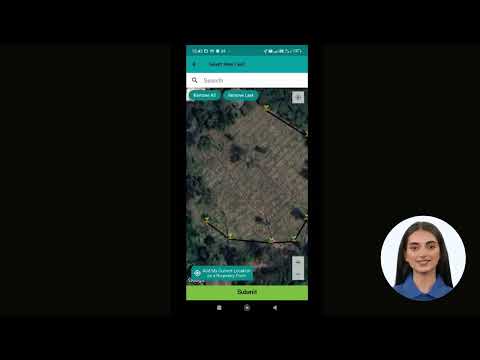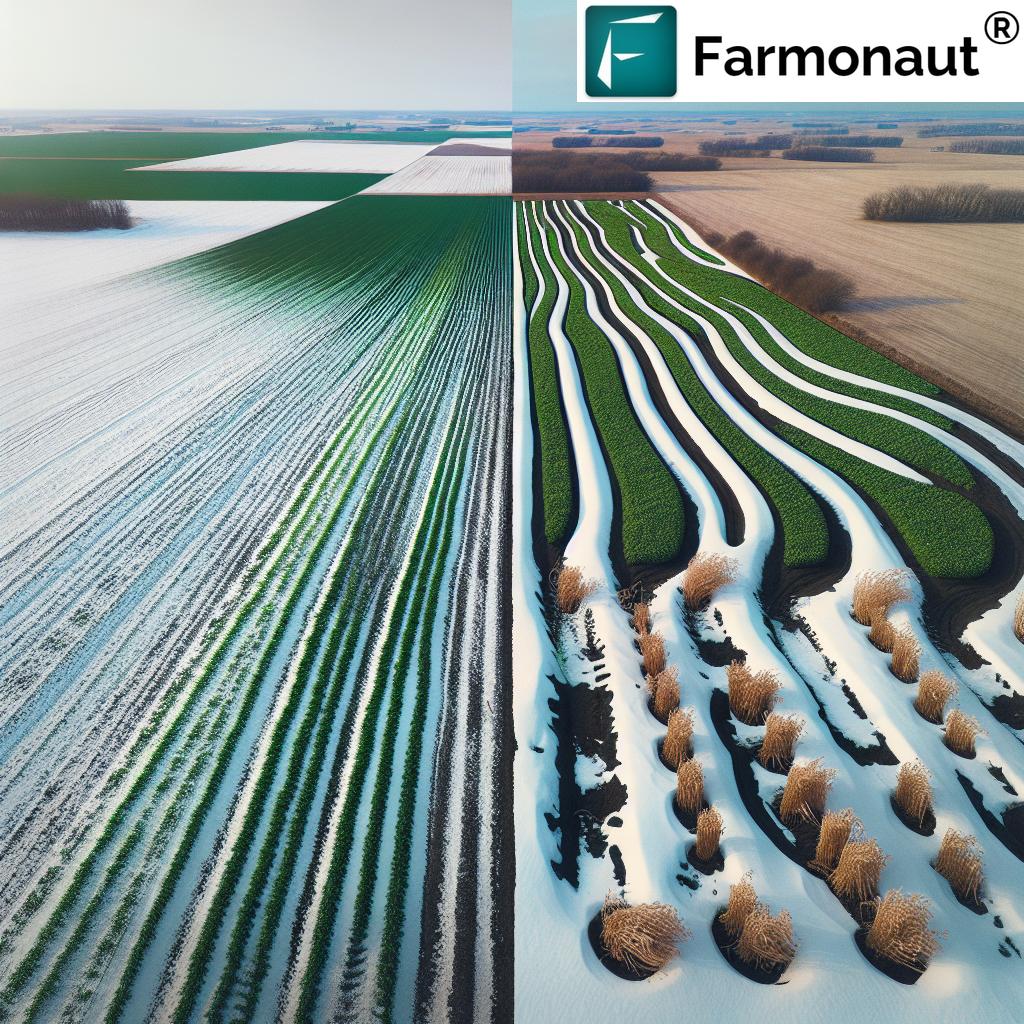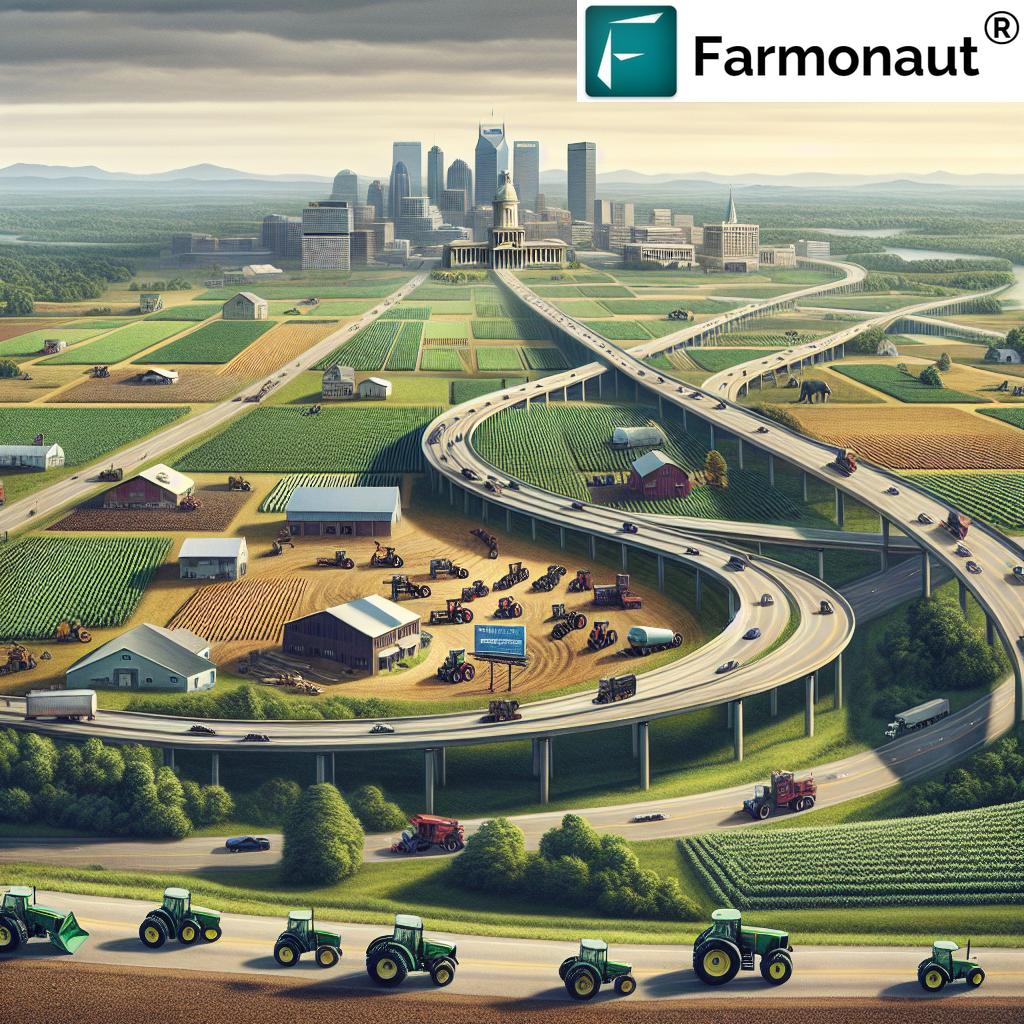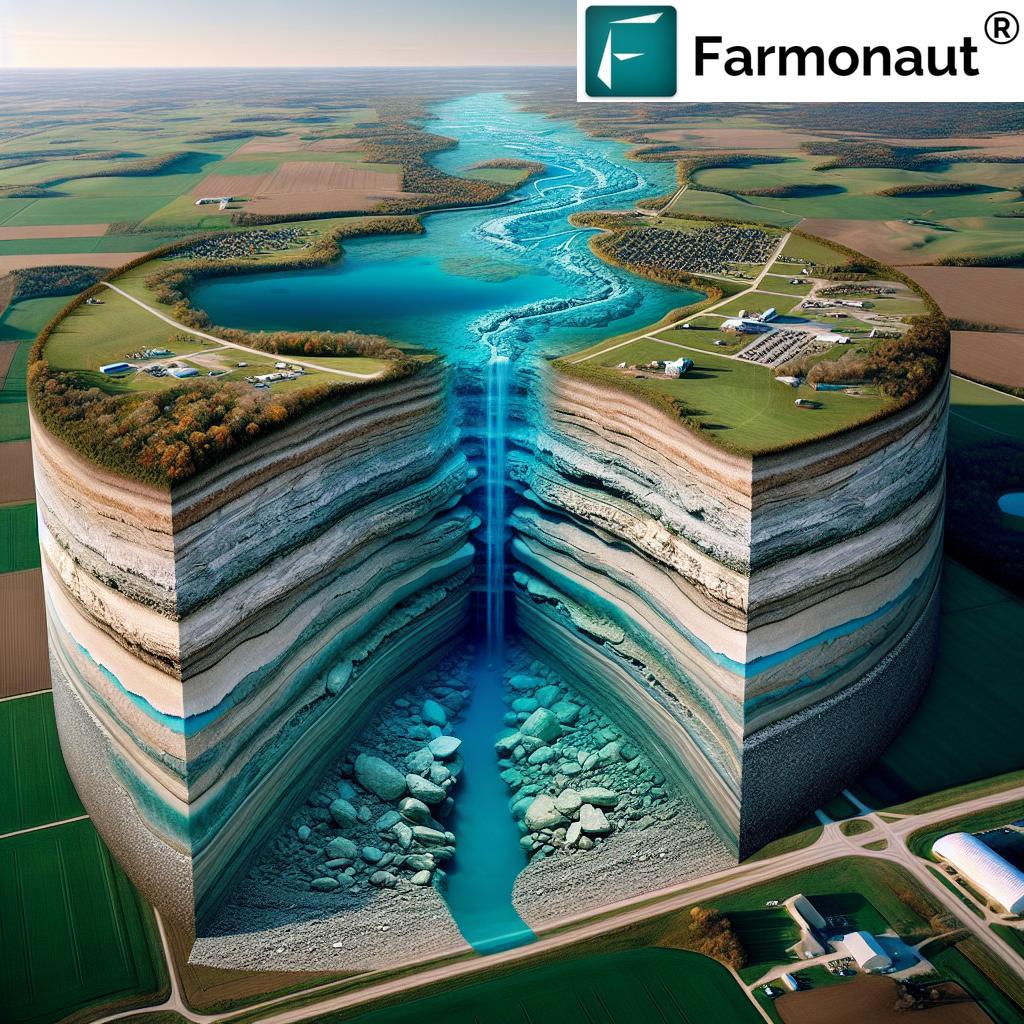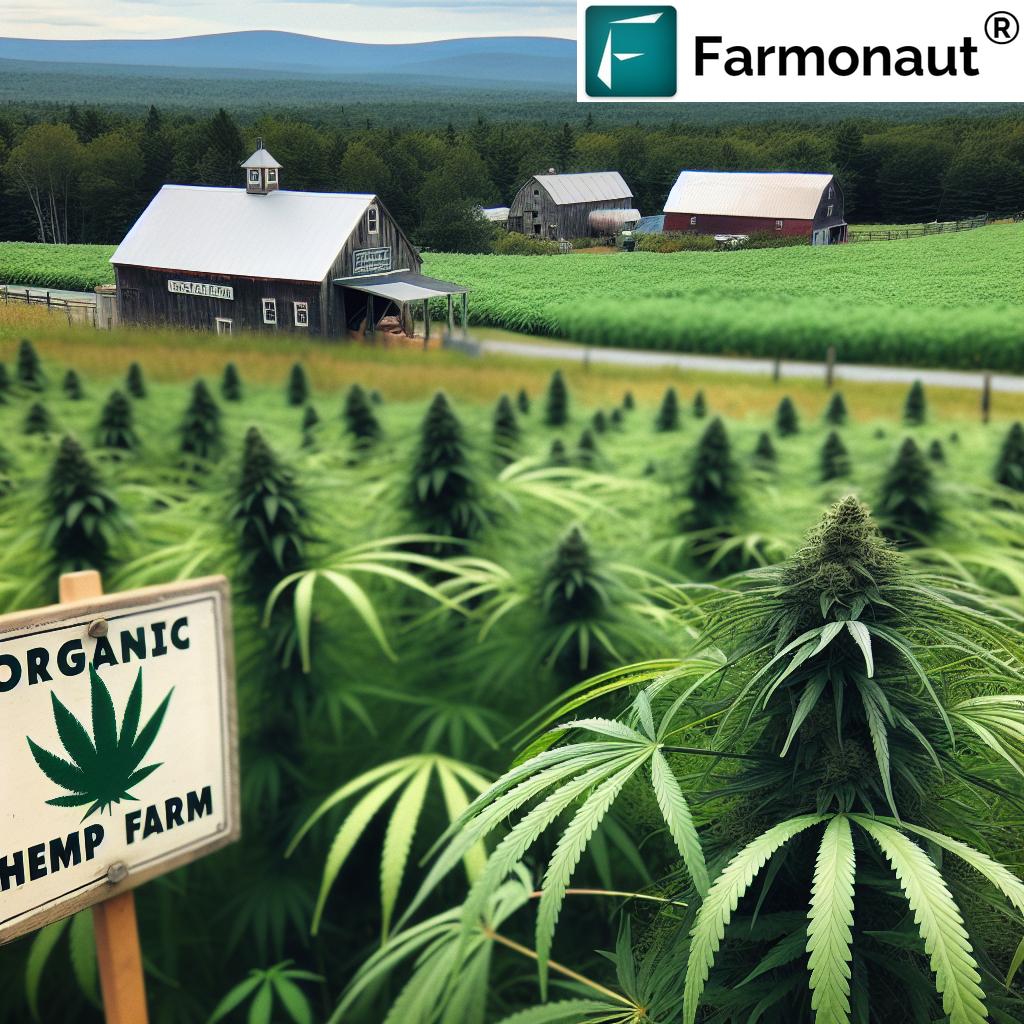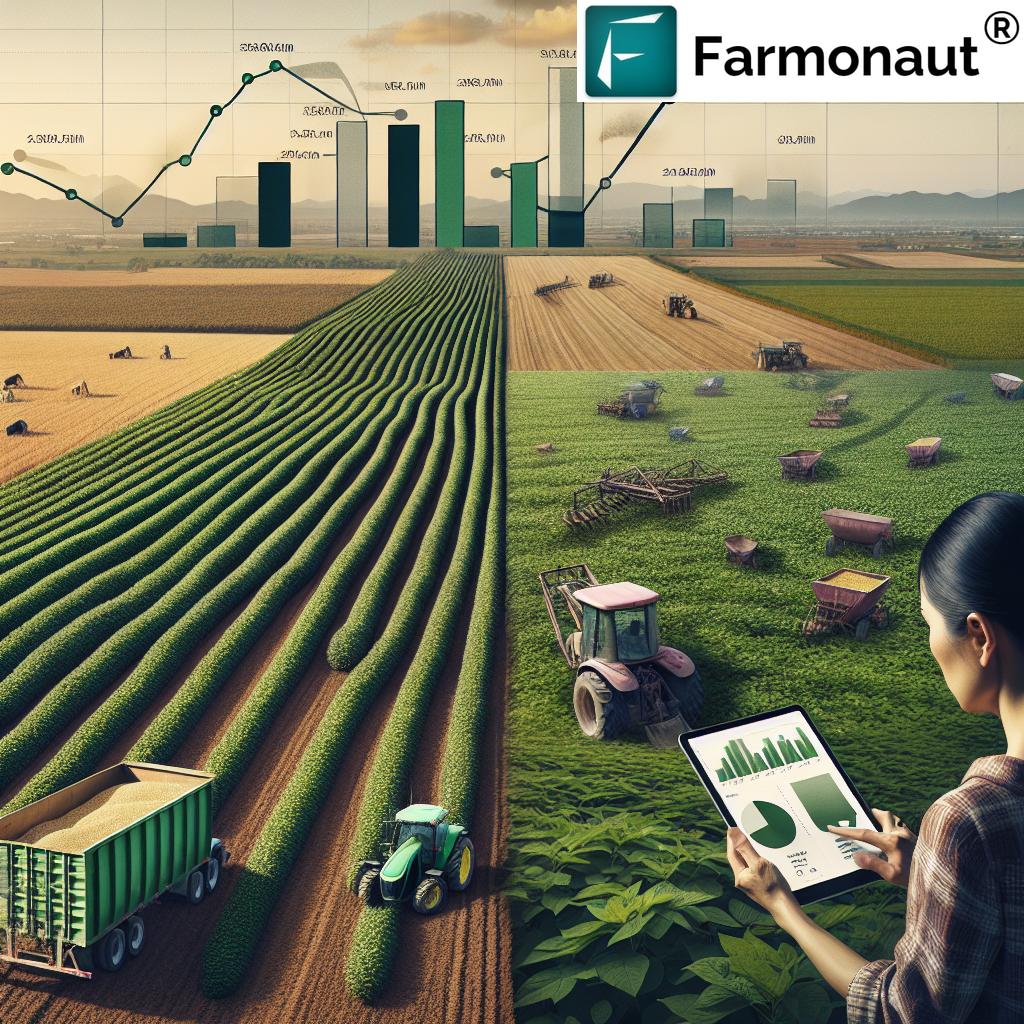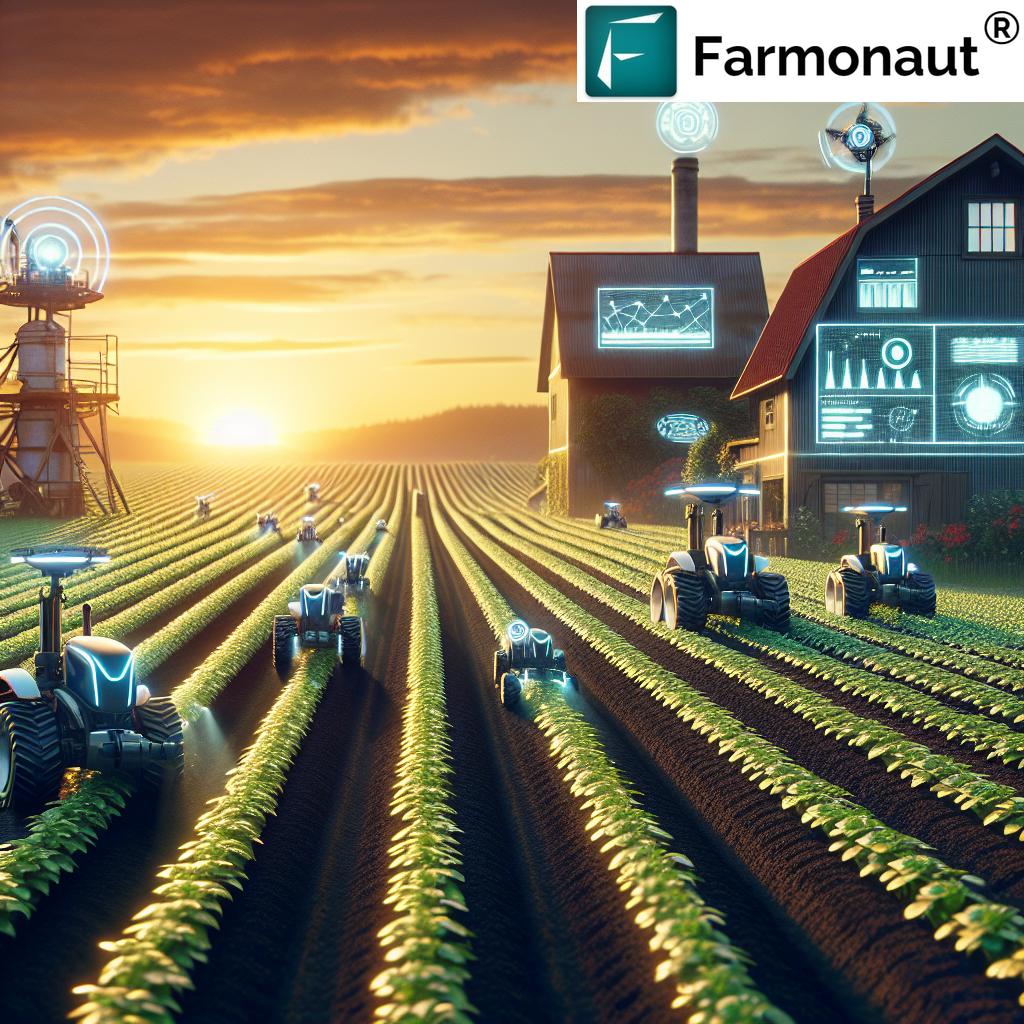Precision Agriculture in Iowa: Hay Work and Smart Farming Solutions for Midwest Farmers
“Iowa farmers using precision agriculture technology can increase crop yields by up to 15% while reducing input costs.”
Welcome to the heartland of America, where the rolling prairies of Iowa meet cutting-edge agricultural innovation. As we delve into the world of precision agriculture and smart farming solutions, we’ll explore how these technologies are transforming the daily lives of Midwest farmers, particularly in the great state of Iowa. Join us on this journey through the challenges and triumphs of rural life, where traditional farming practices blend seamlessly with modern technological advancements.
The Evolution of Midwest Farming
The United States Midwest, particularly Iowa, has long been the backbone of American agriculture. As we navigate through July, the busiest month for many farmers, we see a landscape dotted with lush cornfields, golden wheat, and verdant soybean crops. But beneath this picturesque scene lies a complex web of precision agriculture technology and smart farming solutions that are revolutionizing the industry.
In the heart of this agricultural revolution stands the fifth-generation Iowa farmer, a testament to the enduring spirit of American agriculture. These farmers, with their deep-rooted connection to the land, are now at the forefront of adopting innovative technologies to enhance their farming practices.
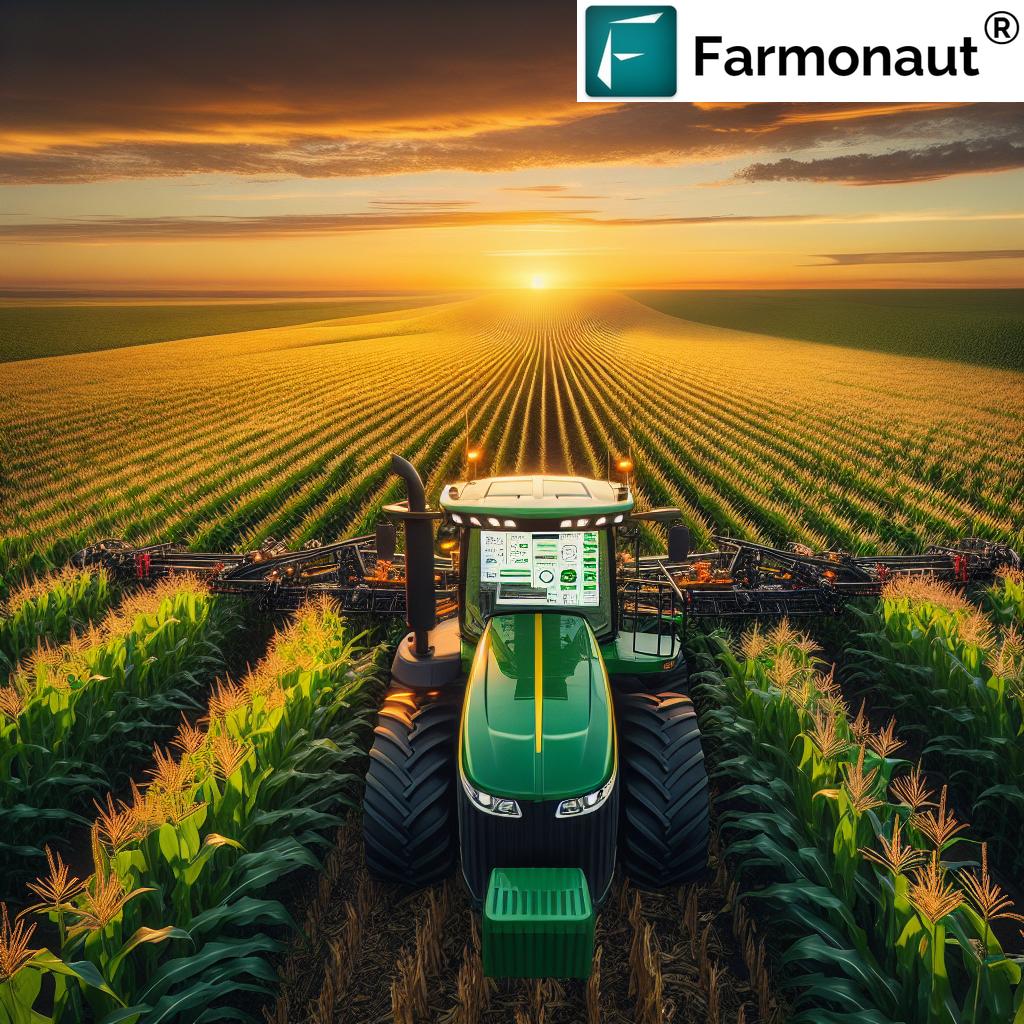
Hay Work: The Backbone of Livestock Farming
One of the most critical activities in July for Midwest farmers is hay work. The importance of quality hay production cannot be overstated, especially for those engaged in livestock farming. Let’s explore how precision agriculture is transforming this essential task:
- Precision Cutting: GPS-guided tractors ensure uniform cutting heights, maximizing yield and quality.
- Moisture Monitoring: Advanced sensors help farmers determine the optimal time for baling, reducing the risk of mold and spoilage.
- Automated Baling: Smart balers adjust tension and density based on real-time moisture readings, producing consistent, high-quality bales.
These technologies not only improve the efficiency of hay production but also contribute to better livestock health and farm profitability.
Crop Monitoring Systems: Eyes in the Sky
One of the most significant advancements in precision agriculture has been the development of sophisticated crop monitoring systems. These systems leverage satellite technology, drones, and ground sensors to provide farmers with unprecedented insights into their fields.
Farmonaut, a leading provider of satellite-based farm management solutions, offers farmers in Iowa and beyond access to cutting-edge crop monitoring technology. Through their web application, farmers can gain real-time insights into crop health, soil moisture levels, and other critical metrics.
Key benefits of crop monitoring systems include:
- Early detection of pest infestations and diseases
- Optimization of irrigation schedules
- Targeted application of fertilizers and pesticides
- Improved yield forecasting
By leveraging these technologies, Midwest farmers can make more informed decisions, leading to increased yields and reduced environmental impact.
Farm Management Software: The Digital Farm Office
Gone are the days of paper ledgers and manual record-keeping. Modern farm management software has transformed the way Midwest farmers handle their operations. These comprehensive platforms integrate various aspects of farm management, from crop planning to financial analysis.
Farmonaut’s farm management software offers a user-friendly interface accessible through both Android and iOS applications, allowing farmers to manage their operations from anywhere, at any time.


Key features of modern farm management software include:
- Crop planning and rotation management
- Inventory tracking for seeds, fertilizers, and equipment
- Financial management and budgeting tools
- Integration with precision agriculture data
- Compliance tracking for regulatory requirements
By centralizing farm data and providing powerful analytics tools, these software solutions empower farmers to make data-driven decisions that optimize their operations and increase profitability.
Smart Farming Solutions: Precision in Action
Smart farming solutions encompass a wide range of technologies designed to increase efficiency and sustainability in agriculture. In the Midwest, these solutions are helping farmers tackle the unique challenges posed by the region’s climate and soil conditions.
“Fifth-generation Midwest farmers manage an average of 1,000 acres, balancing traditional methods with smart farming solutions.”
Some key smart farming solutions adopted by Midwest farmers include:
- Variable Rate Technology (VRT): Allows for precise application of inputs based on soil and crop needs.
- Automated Guidance Systems: Reduce overlap and improve efficiency in planting, spraying, and harvesting.
- Precision Irrigation Systems: Optimize water usage based on real-time soil moisture data.
- Livestock Monitoring Systems: Track animal health and behavior to improve herd management.
These smart farming solutions are not only improving productivity but also contributing to more sustainable agricultural practices across the Midwest.
Agricultural Drone Applications: A Bird’s Eye View
Agricultural drones have become an indispensable tool for many Midwest farmers. These unmanned aerial vehicles provide a cost-effective way to survey large areas of land quickly and efficiently.
Farmonaut’s platform integrates seamlessly with drone technology, allowing farmers to incorporate aerial imagery into their crop monitoring and decision-making processes.
Key applications of agricultural drones in the Midwest include:
- Crop scouting and damage assessment
- Precision spraying of pesticides and fertilizers
- 3D mapping for drainage planning
- Livestock monitoring in remote pastures
By providing high-resolution, real-time data, drones are helping farmers identify issues early and take targeted action, leading to improved crop health and yields.
Soil Health Monitoring: The Foundation of Productivity
Healthy soil is the foundation of successful farming, and Midwest farmers are increasingly turning to advanced soil health monitoring tools to optimize their soil management practices. These tools provide detailed insights into soil composition, nutrient levels, and microbial activity.
Farmonaut’s soil health monitoring capabilities integrate satellite data with on-ground sensors to provide a comprehensive view of soil conditions across the farm.
Key aspects of soil health monitoring include:
- Nutrient analysis and mapping
- Soil moisture tracking
- pH level monitoring
- Organic matter content assessment
By closely monitoring soil health, farmers can make informed decisions about fertilization, irrigation, and crop rotation, leading to improved soil fertility and long-term sustainability.
Precision Irrigation Systems: Every Drop Counts
Water management is a critical concern for Midwest farmers, especially in areas prone to drought or with limited water resources. Precision irrigation systems are helping farmers optimize water usage while improving crop yields.
These systems typically include:
- Soil moisture sensors
- Weather monitoring stations
- Smart irrigation controllers
- Variable rate irrigation nozzles
By integrating data from these components with Farmonaut’s satellite-based crop monitoring, farmers can develop highly efficient irrigation strategies that conserve water while ensuring optimal crop growth.
Weather Data for Farming: Forecasting Success
In the Midwest, where weather can be unpredictable and severe, access to accurate weather data is crucial for farm management. Advanced weather forecasting tools and historical data analysis are helping farmers make better decisions about planting, harvesting, and crop protection.
Farmonaut’s platform incorporates detailed weather data and forecasts, allowing farmers to:
- Plan field operations based on short-term and long-term forecasts
- Assess frost and heat stress risks
- Optimize irrigation schedules
- Make informed decisions about pest and disease management
By leveraging this data, Midwest farmers can mitigate weather-related risks and improve overall farm productivity.
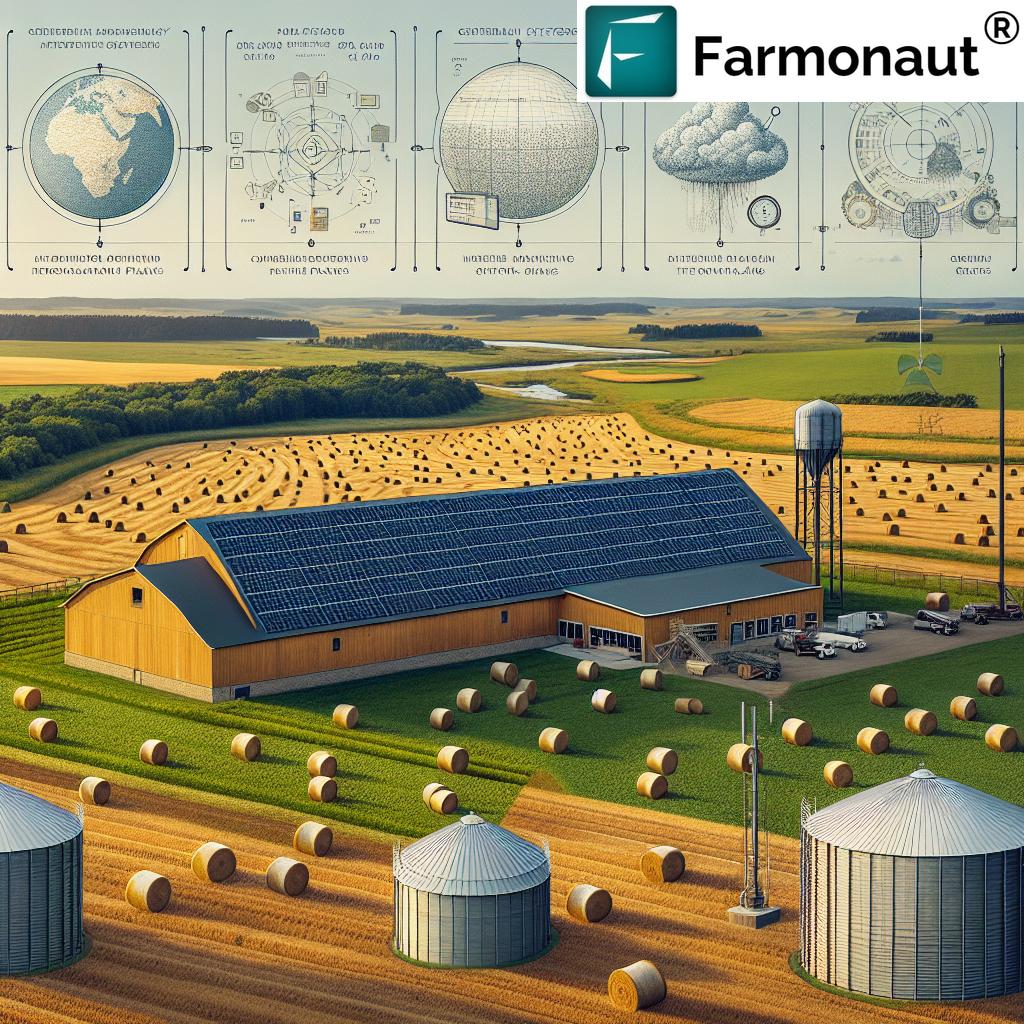
Satellite Crop Imaging: A Global Perspective
Satellite crop imaging has revolutionized the way farmers monitor their fields. This technology provides a broad, comprehensive view of crop health and development across large areas.
Farmonaut’s satellite-based crop monitoring service offers Midwest farmers access to high-resolution satellite imagery and advanced analytics. This allows them to:
- Track crop growth stages
- Identify areas of stress or underperformance
- Assess crop damage after severe weather events
- Plan harvest timing based on crop maturity
By combining satellite imagery with on-ground data, farmers can make more informed decisions about crop management, leading to improved yields and resource efficiency.
Farm Equipment Maintenance: Keeping the Wheels Turning
In the world of modern farming, equipment maintenance is more crucial than ever. With the increasing complexity of farm machinery, proactive maintenance is essential to prevent costly breakdowns and ensure optimal performance.
Smart maintenance solutions include:
- Predictive maintenance algorithms
- IoT sensors for real-time equipment monitoring
- Digital maintenance logs and scheduling tools
- Remote diagnostics capabilities
By implementing these solutions, Midwest farmers can reduce downtime, extend equipment lifespan, and optimize their machinery investments.
Balancing Farm Tasks and Community Engagement
While technology has transformed many aspects of farming, the heart of rural life in the Midwest remains rooted in community. Farmers must balance the demands of their operations with participation in local events and traditions.
Key aspects of this balance include:
- Participation in local fairs and agricultural expos
- Engagement with cooperative extension services
- Involvement in farm organizations and advocacy groups
- Mentoring young farmers and supporting agricultural education
By leveraging precision agriculture technologies, farmers can optimize their time management, allowing for greater community involvement while maintaining productive and efficient farming operations.
Preparing for the Harvest Season
As July progresses, Midwest farmers begin to turn their attention to the upcoming harvest season. Precision agriculture technologies play a crucial role in harvest preparation and execution.
Key technologies for harvest optimization include:
- Yield mapping systems
- Automated harvesting equipment
- Grain quality monitoring tools
- Logistics and storage management software
By utilizing these technologies, farmers can maximize their harvest efficiency, minimize losses, and ensure the highest quality output from their fields.
The Future of Midwest Agriculture
As we look to the future, the role of precision agriculture and smart farming solutions in Midwest agriculture will only continue to grow. Emerging technologies such as artificial intelligence, blockchain, and advanced robotics promise to further revolutionize farming practices.
Farmonaut is at the forefront of this agricultural revolution, continually developing new tools and services to support farmers in their quest for efficiency and sustainability. Their API and developer documentation provide opportunities for further innovation and integration in the agtech ecosystem.
Precision Agriculture Technologies in Midwest Farming
| Technology Name | Primary Function | Estimated Adoption Rate (%) | Potential Yield Increase (%) | Initial Investment Cost Range ($) |
|---|---|---|---|---|
| Agricultural Drones | Crop scouting, mapping | 35 | 5-10 | 1,000 – 10,000 |
| Satellite Crop Imaging | Large-scale crop monitoring | 60 | 7-15 | 500 – 5,000 (annual subscription) |
| Precision Irrigation Systems | Water management | 40 | 10-25 | 10,000 – 100,000 |
| Soil Health Monitoring Tools | Nutrient management | 55 | 8-20 | 2,000 – 15,000 |
| Farm Management Software | Data analysis, planning | 70 | 5-15 | 500 – 5,000 (annual subscription) |
| Weather Data Analytics | Risk management | 75 | 3-8 | 200 – 2,000 (annual subscription) |
Conclusion
The landscape of Midwest agriculture is evolving rapidly, driven by the adoption of precision agriculture technologies and smart farming solutions. From the hay fields of Iowa to the vast corn and soybean expanses of Illinois and Missouri, farmers are embracing these innovations to enhance productivity, sustainability, and profitability.
As we’ve explored in this blog, technologies such as crop monitoring systems, farm management software, and agricultural drones are transforming daily farming operations. These tools, combined with the expertise and dedication of Midwest farmers, are ensuring that the heartland remains at the forefront of global agricultural production.
The journey of innovation in agriculture is ongoing, and companies like Farmonaut are playing a crucial role in making advanced technologies accessible and affordable for farmers of all scales. As we look to the future, it’s clear that the integration of technology and traditional farming practices will continue to shape the agricultural landscape of the Midwest and beyond.
FAQ Section
- What is precision agriculture?
Precision agriculture is an approach to farm management that uses information technology to ensure that crops and soil receive exactly what they need for optimum health and productivity. - How does satellite crop imaging benefit farmers?
Satellite crop imaging provides farmers with a broad view of their fields, helping them identify areas of stress, track crop growth, and make informed decisions about resource allocation. - What are the main benefits of using farm management software?
Farm management software helps farmers streamline operations, track finances, manage inventory, and make data-driven decisions to improve overall farm productivity and profitability. - How do agricultural drones contribute to farming efficiency?
Agricultural drones provide high-resolution imagery for crop scouting, can be used for precision spraying of pesticides and fertilizers, and help in creating 3D maps for drainage planning. - What role does weather data play in modern farming?
Accurate weather data helps farmers plan field operations, assess risks, optimize irrigation schedules, and make informed decisions about pest and disease management.
Farmonaut Subscriptions




